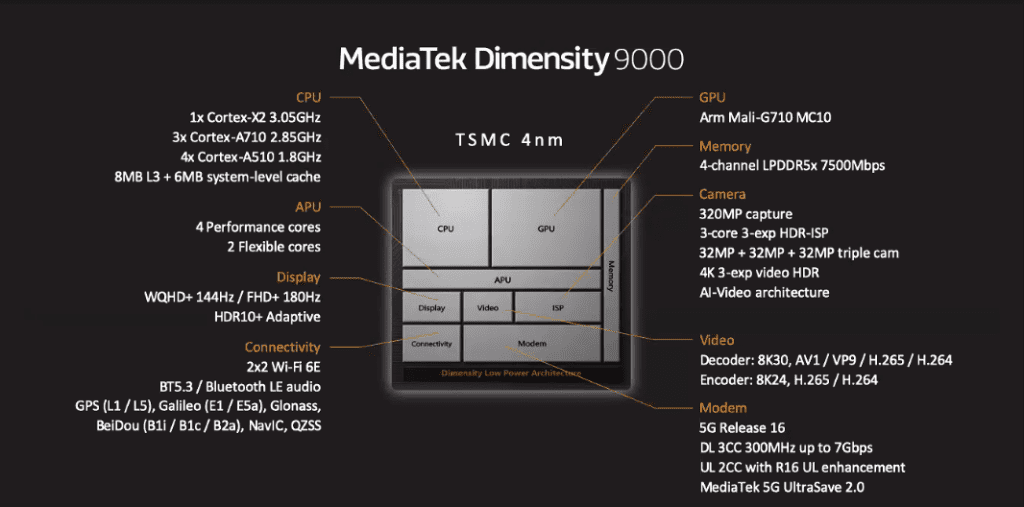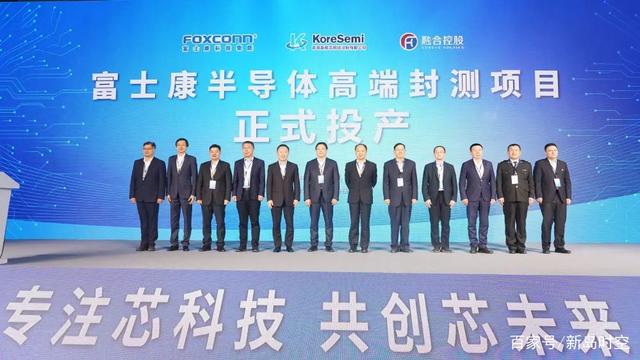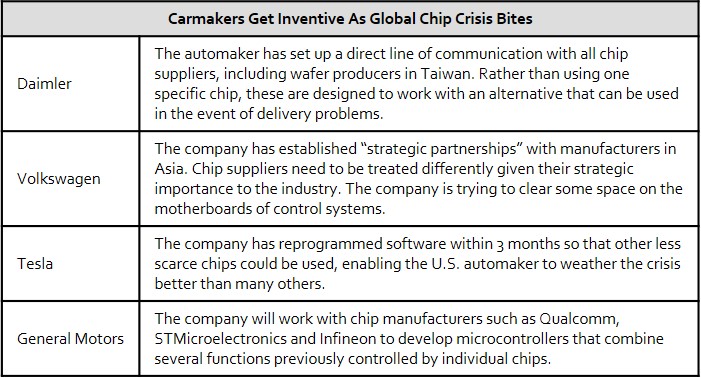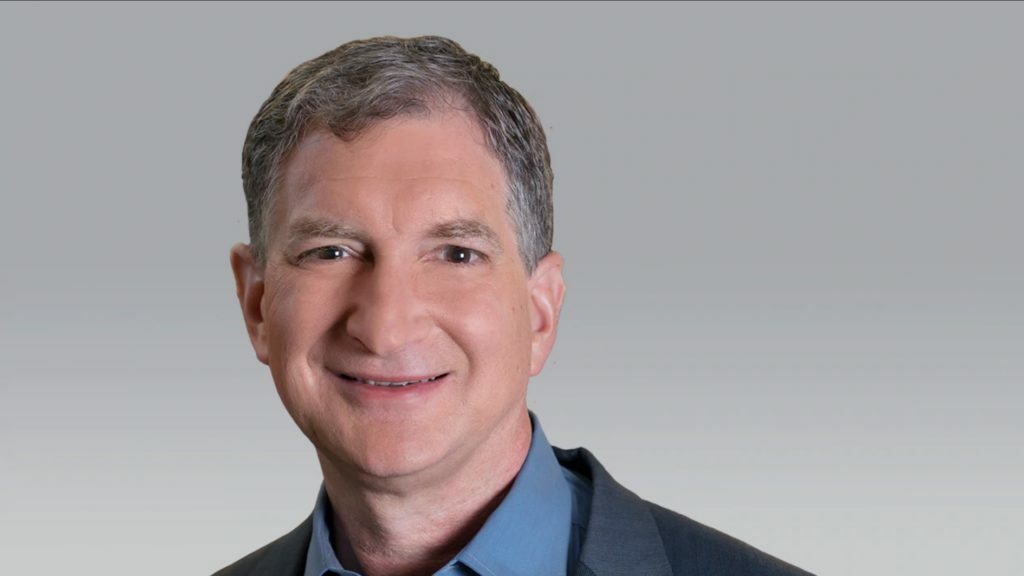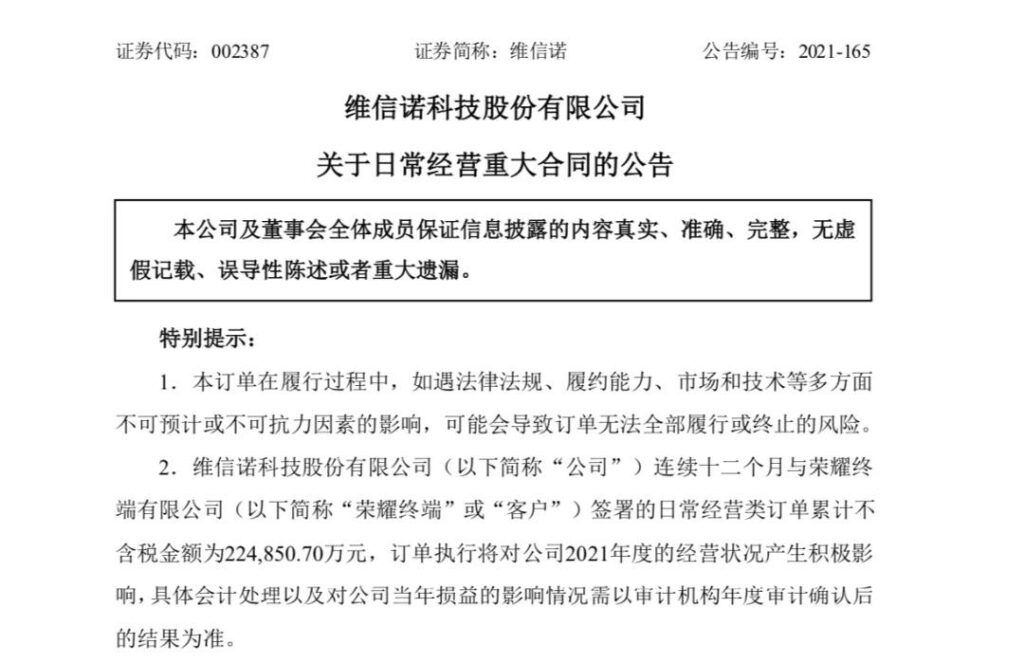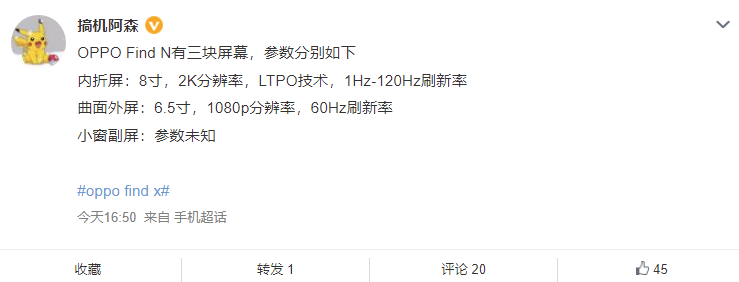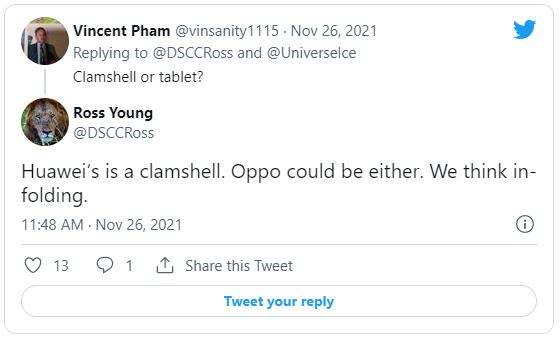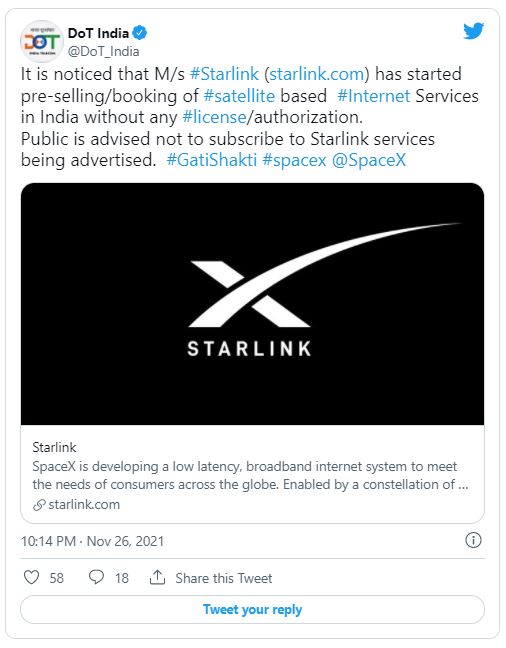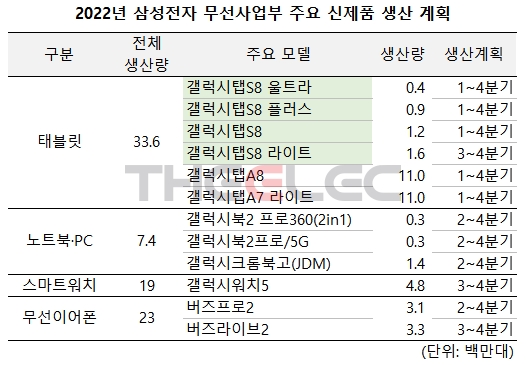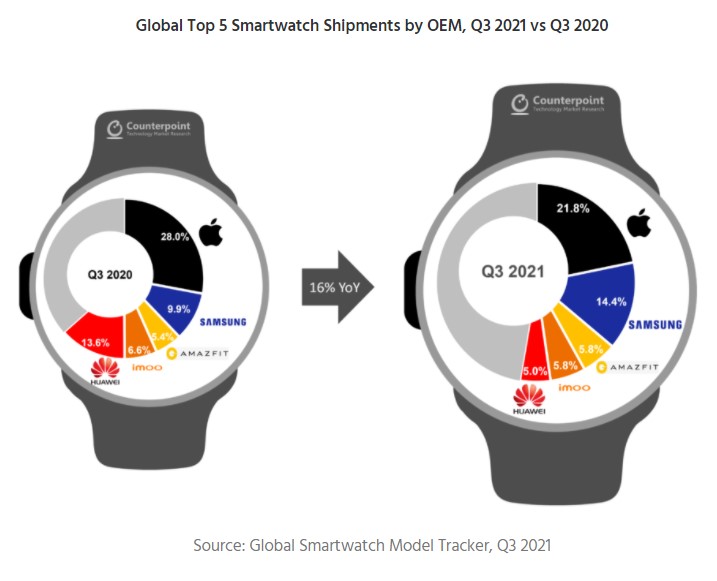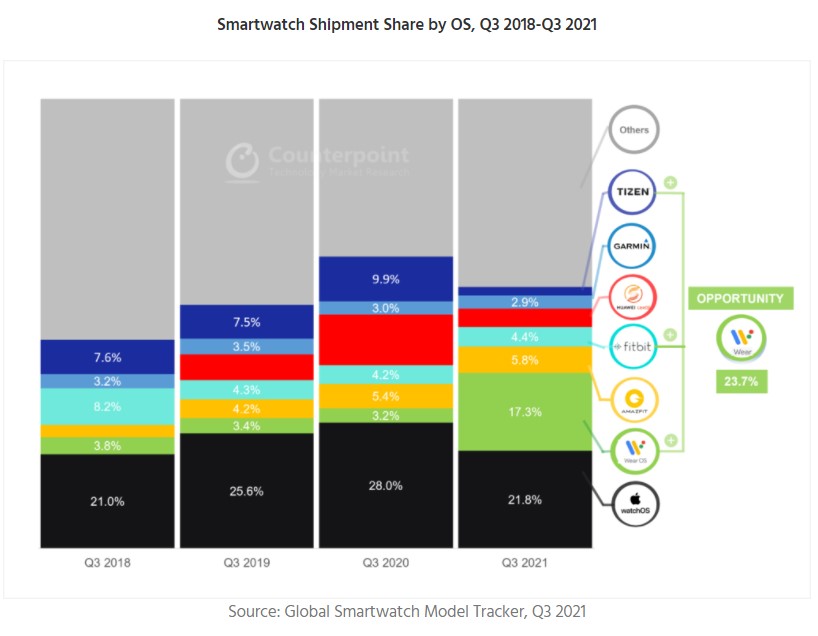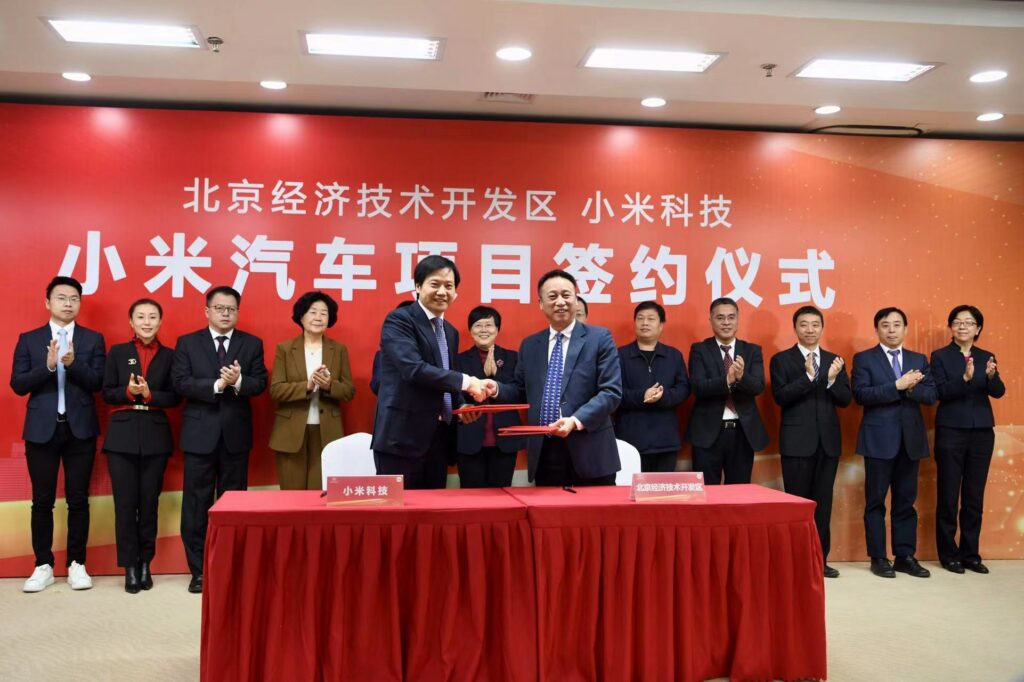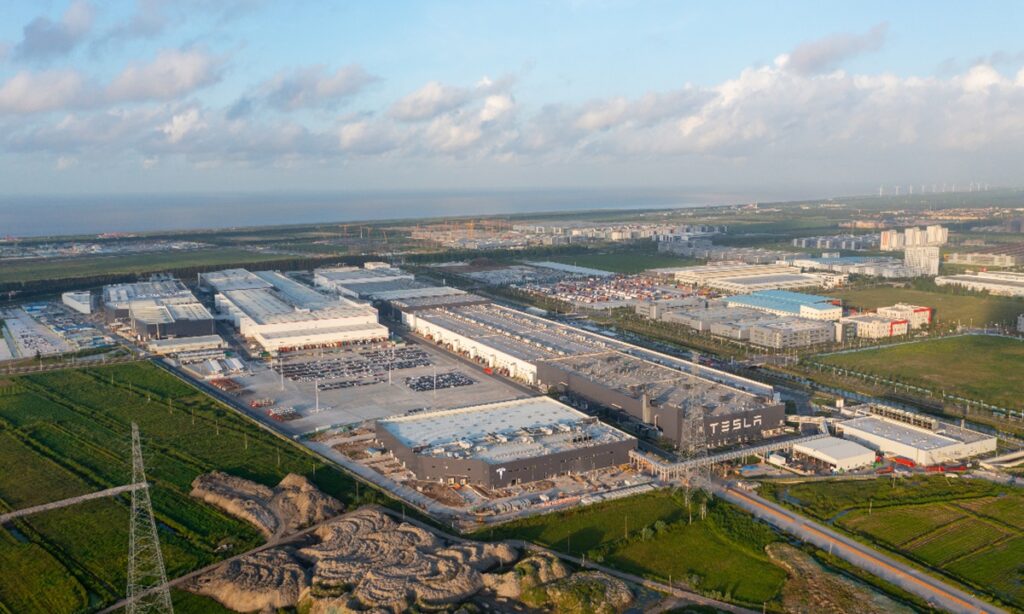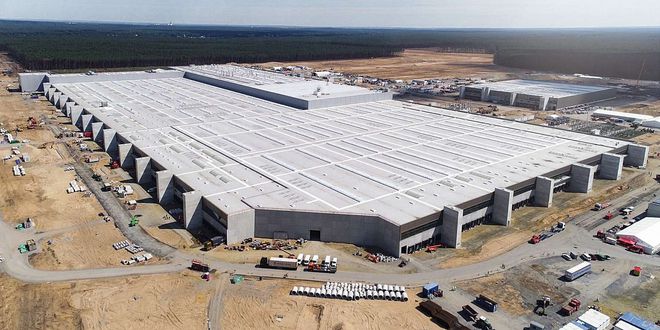
11-29 #Work : Samsung will reportedly increase the production of its Exynos for Galaxy smartphones; AMD, Intel, Nvidia are seeing eye to eye on when the global chip shortage could finally end; Reliance Jio has announced up to 21% hike in its prepaid tariffs from Dec 2021; etc.
MediaTek expresses a lot of confidence in the performance of the Dimensity 9000. According to the company, all the samples it sent to manufacturers so far have come back with a very positive review. The company claims that there is only one company in the world that has a problem with the chip heat, but it is not MediaTek. (Laoyaoba, My Drivers, GizChina)
Japan has announced they will allocate around JPY600B (USD5.2B) from its fiscal 2021 supplementary budget to chip plants by Taiwan Semiconductor Manufacturing Co (TSMC) and other notable semiconductor manufacturers. The JPY400B of this budget will be used on a new TSMC factory, which will be located in Kumamoto prefecture. Earlier Nov 2021, TSMC announced they will build a USD7B chip plant in Japan in collaboration with Sony Group. (My Drivers, Reuters, Nikkei)
Foxconn’s first wafer-level packaging and testing plant is put into operation in Qingdao West Coast New District. The project was formally signed in Apr 2020, construction started in Jul, and the main body was capped in Dec. It only takes 18 months from start-up to mass production. It is estimated that about 30,000 wafers will be packaged and tested every month after reaching production. (Laoyaoba, Sohu, ETToday, China Times)
Samsung will reportedly increase the production of its Exynos for Galaxy smartphones to raise the proportion of its in-house processors in Galaxy and lower dependence on Qualcomm. According to Digitimes, the number of Samsung devices with Exynos chips will double or triple in 2022. Also rumored Samsung is planning to raise the proportion of Exynos usage in Galaxy smartphones from 20% to 50-60%. (GizChina, Digitimes, Android Authority, ET News)
Whether buying computer chips directly from manufacturers, reconfiguring cars, or producing them with parts missing, automakers are having to get creative to cope with the global shortage of semiconductors. The shortage, due to supply problems and a surge in demand for consumer electricals during the pandemic, has hit the auto industry hard, with millions of vehicles worldwide not being produced because important parts are missing. (CN Beta, Auto News, US News, Reuters)
AMD’s CTO Mark Papermaster speaks on the broad contours of the semiconductor industry, supply chain issues that the industry is facing and newer challenges and opportunities for the industry. He predicts that the supply chains will start to ease up in 2H22, with normalcy returning to the semiconductor industry by 2023. (CN Beta, Hardware Times, Business Line)
AMD, Intel, Nvidia are seeing eye to eye on when the global chip shortage could finally end. AMD CTO and EVP, Mark Papermaster, has indicated that the silicon industry could finally be at a supply-demand equilibrium in 2023 which implies prices should also return to their normal suggested MSRP levels during this period. Intel CEO, Pat Gelsinger, has stated “it could still take a couple of years” for the shortage to ease. Nvidia CEO Jensen Huang has echoed similar statements saying that through 2022, demand is going to far exceed supply. (Yahoo, Business Line, Neowin)
Volvo Cars has invested in an optical imaging start-up company called Spectralics. The car manufacturer wants to develop a new technology that can turn the entire front windshield into a display. This technology is more complete than the current HUD display. Volvo believes it helps to improve the driving experience, keeping the driver’s sight always in front and enhancing safety. (GizChina, SlashGear, Volvo)
Visionox has announced that the company has signed with Honor for 12 consecutive months totaled CNY2.249B without tax, accounting for 106.58% of the company’s audited main business revenue in 2020. According to Sigmaintell, Visionox has shipped about 6.3M OLED panels in 3Q21, ranking fourth in the world and second in China. (Laoyaoba, STCN, Sohu)
OLED display driver ICs (DDI) supply may fall short of demand in 2022, with the chip shortage likely to disrupt shipments for smartphones, according to Digitimes. They estimate that the supply chain will have enough resources to manufacture around 650M DDI units in 2022. At the same time, they expect OEMs to manufacture a total of 710M OLED smartphones combined, which means that DDI supply could fall short by around 60M units. (Digitimes, SamMobile, Digitimes)
OPPO will reportedly launch a foldable smartphone, dubbed OPPO Find N, which will use an 8” internal folding display, with 2K resolution and high refresh, thanks to the LTPO technology, it can achieve adaptive 1Hz-120Hz refresh rate; the external display is a 6.5” curved display, standard 1080p resolution 60Hz refresh rate; small secondary display are unknown. (IT Home, GSM Arena, GizChina)
Huawei may launch a new foldable smartphone in the form of clamshell dubbed “Mate V Flip” at the end of 2021. It has a secondary screen on the back and is equipped with dual cameras. The foldable phone will be equipped with its own HarmonyOS operating system. (My Drivers, Yahoo, GizChina, Huawei Update, Android Headlines)
The successor of Xiaomi’s foldable smartphone Mix Fold will be released in 2022. This iterative model is a high refresh rate display, and is equipped with camera under display technology. (CN Beta, Sina, EE World, GizChina)
OPPO foldable smartphone phone “Find N” will reportedly be the first self-developed image signal processing (ISP) chip, using Sony IMX766 with self-developed image processor (ISP). (My Drivers, IT Home, Sina)
GigaDevice has indicate that the price situation in the spot market is not in the chain of concern. The company’s NOR Flash 4Q21 and 2022’s prosperity is still very optimistic, the supply is still very tight, and the shortage tension will continue at least until 1H22. (Laoyaoba, East Money, IT Home)
United Microelectronics (UMC) has agreed to make a one-time payment of an undisclosed amount to Micron Technology according to a settlement agreement reached between the two. As part of the deal, the companies will also withdraw their complaints globally against the other party. UMC and Micron look forward to engaging in mutual business cooperation opportunities. (Digitimes, Reuters, Bloomberg, Globe Newswire)
According to Digitimes, first-tier battery vendors that originally insisted on not raising the contract price of lithium batteries in 2022 have recently begun to notify customers who have signed contracts to re-negotiate prices. In principle, the quotations have increased by about 20%. Supply chain officials have point out that due to the booming demand and short-term competitors cannot catch up, manufacturers’ quotations are expected to rise across the board in 2022. (Digitimes, Digitimes, Benzinga, Chuanqi)
After Bharti Airtel and Vodafone Idea, India’s largest mobile operator Reliance Jio has announced up to 21% hike in its prepaid tariffs from Dec 2021. The tariff hikes entail JioPhone Plan, Unlimited Plans, and data add on, and range 19.6%-21.3%. (CN Beta, Business Insider, Live Mint, India Times)
The Indian government has instructed citizens not to subscribe to SpaceX’s Starlink satellite Internet service. Starlink Internet services are censored by the Indian government in Apr 2021. The Indian Ministry of Telecommunications has begun investigating whether the Starlink beta violated the country’s telecommunications laws. However, SpaceX has already registered Starlink business in India on 1 Nov 2021. The company has started advertising pre-sales of its services and has received more than 5,000 orders in India. SpaceX plans to deploy 200,000 Starlink Internet user terminal devices in India by 2022, 80% of which are located in rural areas. (GizChina, Twitter, Reuters, The Verge, Hindustan Times)
Samsung is expecting to ship 34M Galaxy Tab devices in 2022, which would be a 6% hike over 2021 shipment of the device. That is double the 3% gain in Galaxy Tab shipments that Samsung registered for 2021 from 2020. In 2021, Samsung sees 32M Galaxy Tab slates shipped compared to 31M the year before. Samsung will produce 400,000 units of the Galaxy Tab S8 Ultra, 900,000 Galaxy Tab S8+, and 1.2M Galaxy Tab S8 tablets starting in 1Q22. (The Elec, Phone Arena)
Global smartwatch shipments in 3Q21 increased 16% compared to the same period last year, continuing their double-digit growth following the previous quarter, according to Counterpoint Research. Thanks to the launch of the Galaxy Watch 4 series, Samsung achieved its highest quarterly shipments, narrowing the gap with Apple and reclaiming second place from Huawei. Apple still held the No. 1 spot in Q3 2021 but its share fell 10% YoY as its Watch Series 7 launch was delayed to 4Q21. (GizChina, Counterpoint Research)
TF Securities analyst Ming-Chi Kuo has indicated that Apple’s augmented reality (AR) headset will have a main processor that is the equivalent of the M1. It will have a second processor that handles all sensor-related computing, for example with eye tracking and gaze detection. He predicts that the headset will feature two 4K micro-OLED displays, made by Sony. He has revealed that Apple’s goal is to replace the iPhone with AR in 10 years. (TF Securities, MacRumors, CTEE, CNYES, ETT Today, Apple Insider)
Samsung has announced that it has sold more than 1M units of ‘The Frame’ in 2021, making it Samsung’s first single-year million-seller in its Lifestyle TV lineup. Total sales since The Frame’s 2017 launch are expected to exceed 2M units by year end, driven by heavy demand in North American and European markets. (Sammy Hub, Samsung)
Xiaomi is reportedly planning to build a factory that can produce 300,000 electric vehicles per year in Beijing. The factory will be built in two phases and will be completed in 2024. Xiaomi will build its EV headquarters, sales, and research offices in the Beijing Economic and Technological Development Zone. (Neowin, Reuters, Sina, EET China)
Tesla will invest another CNY1.2B (USD188M) to upgrade its manufacturing facilities in its Shanghai Gigafactory, including for environmental protection. Tesla will optimize the production lines of its Gigafactory (phase one) in Shanghai. It plans to invest CNY1.2B in the project, of which CNY85M will go to environmental protection. Construction is expected to begin in Dec 2021 and to be completed in Apr 2022. (My Drivers, Reuters, Global Times)
Tesla Giga Berlin could start Model Y production by the end of Dec 2021. Tesla aims to produce as many as 30,000 vehicles at Giga Berlin by 1H22. The company expects to start serial production at the Gigafactory near Berlin with 1,000 cars per week and gradually increase. (CN Beta, Teslarati, Automobilwoche, InsideEVs, Electrek, Bloomberg)

